Trà Sen: Basic Information
Pronunciation
Alternative Name(s)
Drink Type
Mealtime
Popular Trà Sen Variations
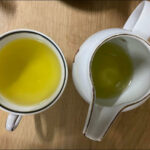
Trà Sen Tây Hồ
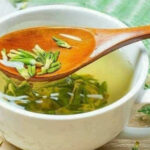
Trà Tim Sen
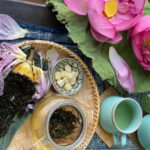
Trà Ướp Bông Sen Tươi
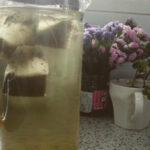
Trà Sen Túi Lọc
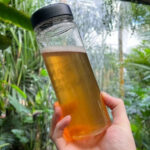
Trà Lá Sen
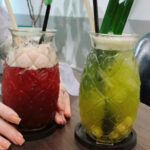
Trà Sen Lá Dứa
Trà Sen: Ingredients and Preparation
Main Ingredients
Main Preparing Method
Preparation Process
Trà Sen: A Deep Dive
Cultural Significance
Taste
Texture
Aroma
Color
Serving Style
Serving Temperature
Accompaniment
Occasions
Calories
Popularity
Popular Similar Drinks
- Trà Lài
- Trà Xanh
- Rose Tea
- Chrysanthemum Tea
Popular Dining Area
Trà sen is a Vietnamese dry tea that is infused with the fragrant aroma of lotus flowers. To make trà sen, people only pick the first bud and the following two leaves, often called “một tôm hai lá”. Then, these buds are dried until the water content in the leaves only remains around 5 – 7%.
Ideally, this traditional tea is stored in banana leaves first for 20 – 30 days until the tangy profile is reduced. As for the lotus flowers, they must be harvested from the swarms of Dong Tri, Thuy Su, Quang Ba village in Ho Tay.
Additionally, the harvesting time is crucial when it’s usually done early in the morning when the flowers still have some dews on them. Once the lotus flowers are extracted, locals then alternate layers of tea and lotus flowers.
This process is then repeated 7 to 9 times, with each having a drying process between them. Due to the complicated preparation process, trà sen in a teapot can remain flavorful for weeks. On average, 2.2 pounds of trà sen requires around 1000 to 1400 lotus flowers to infuse the flavor.
To fully understand Vietnamese trà sen, you should go through some of the adaptations of this tea before figuring out the process of steeping this beverage. Also, you should uncover a few food options that pair well with this tea before learning about the benefits and drawbacks of consuming trà sen.
Next, it’s essential to look into the common inquiries relating to trà sen and find out some tea versions that are like Vietnamese trà sen.
Key Points
Trà Sen Images
What Are the Different Variations of Trà Sen?
Trà sen is not just a simple combination of dry tea with lotus, as other parts of the flowers and even the leaves of the plant are also used to make tea. To keep it simple, let me introduce you to 7 popular versions of trà sen:
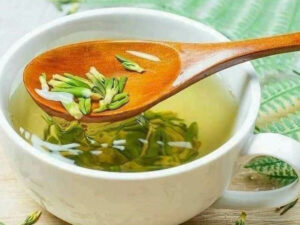
Trà Tim Sen
Made using the heart of the lotus flower, extracting from the seedsOffering a more concentrated and intense lotus flavorHas a bitter profile
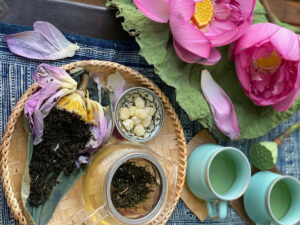
Trà Ướp Bông Sen Tươi
Fresh lotus blossoms are used to infuse the teaProviding a very fresh and natural lotus aroma
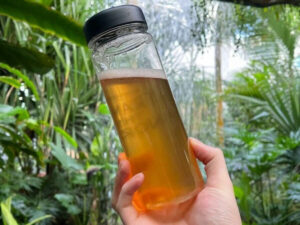
Trà Lá Sen
Utilizes lotus leaves instead of flowersUsed as a medicine with a sedative effect
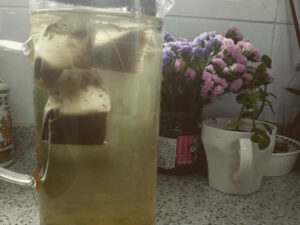
Trà Sen Túi Lọc
Lotus tea available in tea bags for convenience, offering a more subtle lotus flavor.

Trà Sen Lá Dứa
A combination of lotus tea and pandan leavesOffering an aromatic flavors
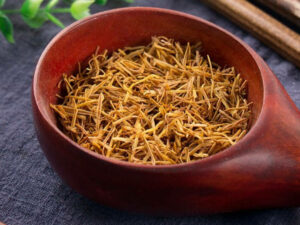
Trà Liên Tu
Used dried stamen of lotus flowers
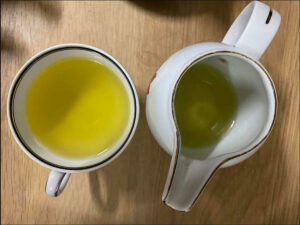
Trà Sen Tây Hồ
Named after the Tay Ho area in HanoiHas a high market value in VietnamA translucent light green color once steeped
These variations of trà sen are just one side of the story, as brewing and preparing this aromatic tea is also an interesting process to look at.
How to Prepare Trà Sen in Vietnam?
To prepare trà sen, there are a few steps that you need to know to ensure an aromatic mix of lotus tea when brewing:
Step 1: Warm the Teapot
Begin by warming your teapot with hot water. This helps maintain the temperature while brewing. Use about one teaspoon of trà sen leaves for each cup of tea you plan to brew.
Step 2: Boil Water
Bring water to a boil and then let it cool for a minute or two. The ideal water temperature for brewing trà sen is around 80-85°C (176-185°F). Using water that’s too hot can make the tea bitter.
Step 3: Steep the Tea
Add the trà sen leaves to the teapot and pour the hot water over them. Allow the tea to steep for a few minutes. The steeping time can be adjusted based on how strong you prefer your tea.
Step 4: Strain and Serve
After steeping, pour the tea into your cup.
Step 5: Enjoy
Savor the unique and delicate lotus aroma and flavor of the trà sen. It’s traditionally enjoyed without any additives like milk or sugar to appreciate its natural flavor.
Once you’ve prepared a good cup of trà sen, take time to enjoy it with a few recommended accompaniments to fully appreciate its fragrant flavor.
What Accompaniments to Enjoy with Trà Sen?
When it comes to accompaniments, the key is to choose items that complement rather than overpower the subtle flavors of the tea. Here are some suggestions:
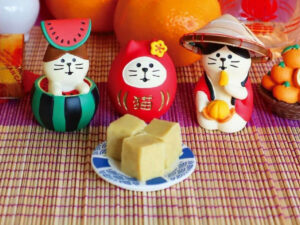
Traditional Vietnamese sweets
Mung bean or lotus seed-based sweets, which are not too sugary, can complement the tea’s delicate flavor.
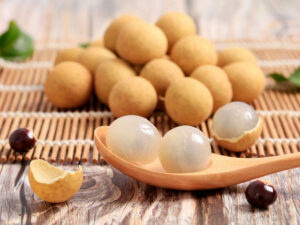
Fruits
Opt for mild and fresh fruits like lychee, longan, or slices of melon. Dried fruits like raisins are also acceptable. Their subtle sweetness and refreshing taste can enhance the tea-drinking experience.
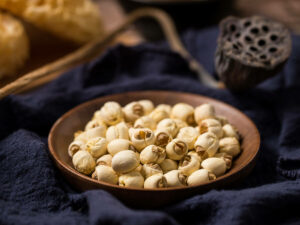
Nuts and seeds
A small serving of unsalted or lightly salted nuts, like cashews or lotus seeds, can be a great accompaniment, offering a contrast in texture.
Selecting the right accompaniments for trà sen is essential to fully appreciate its delicate and nuanced flavors. Now, after exploring the perfect pairings for this exquisite tea, let’s delve into understanding its benefits and drawbacks.
Pros and Cons of Drinking Trà Sen
These are a few important features that influence your decision to enjoy trà sen:
Pros
Cons
To further extend your knowledge about trà sen, make sure to find out some of the concerns of many about this drink.



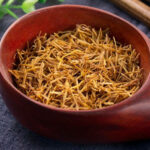
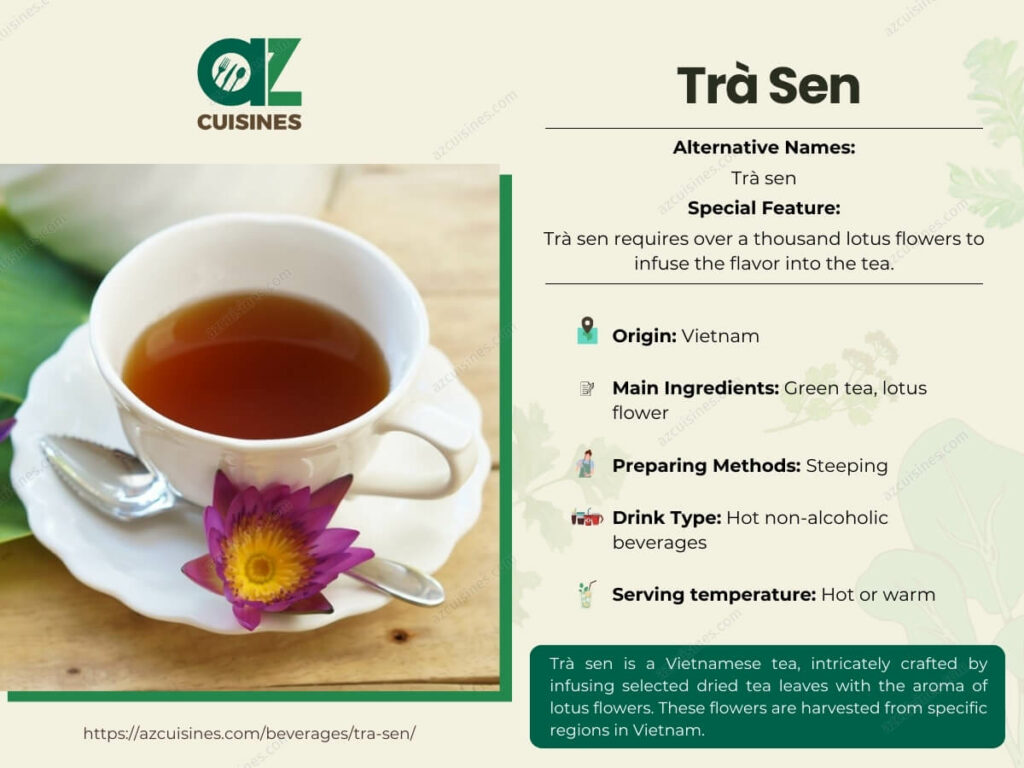
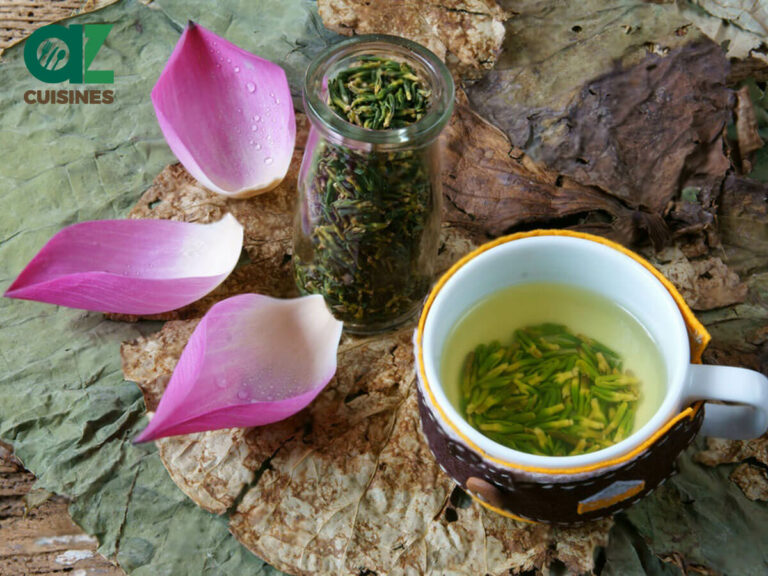
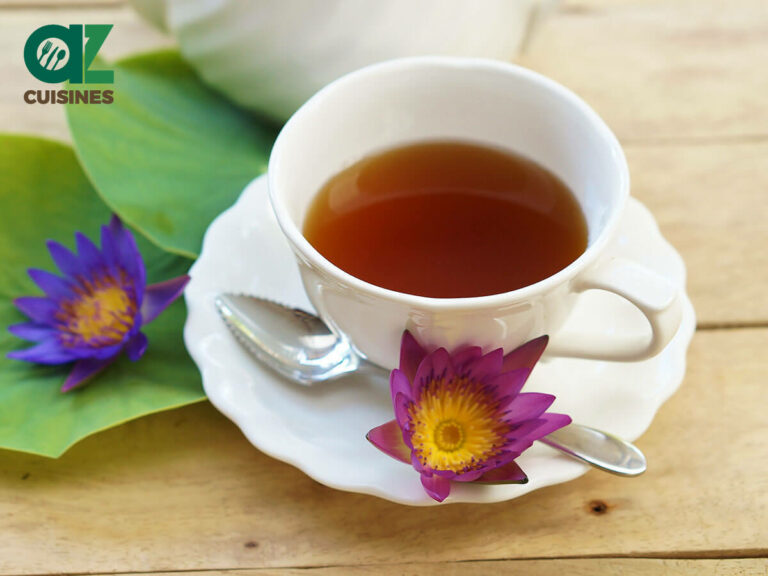
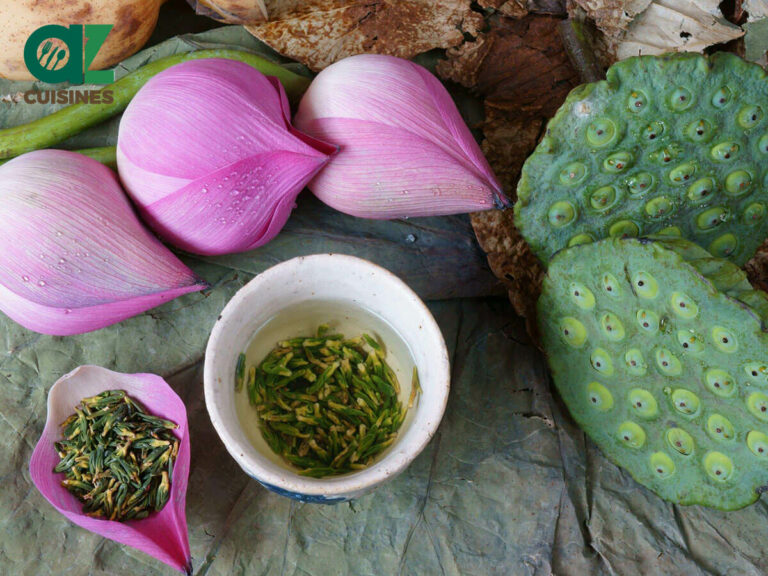
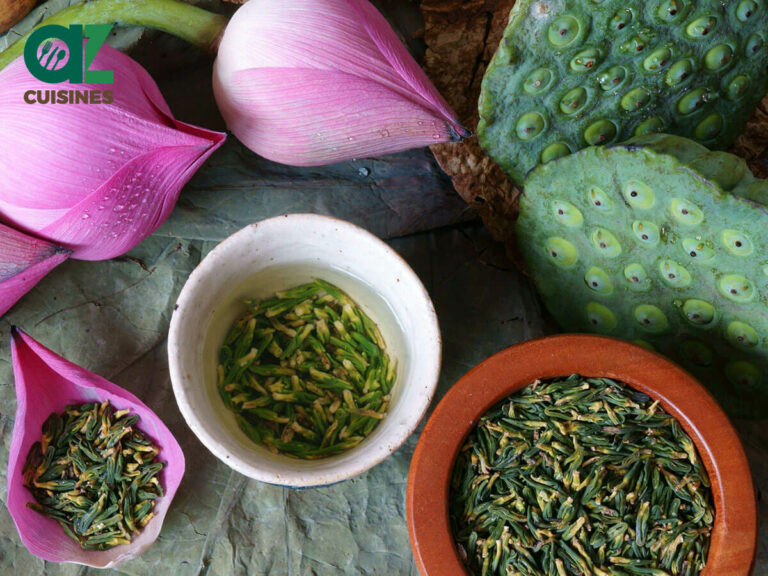
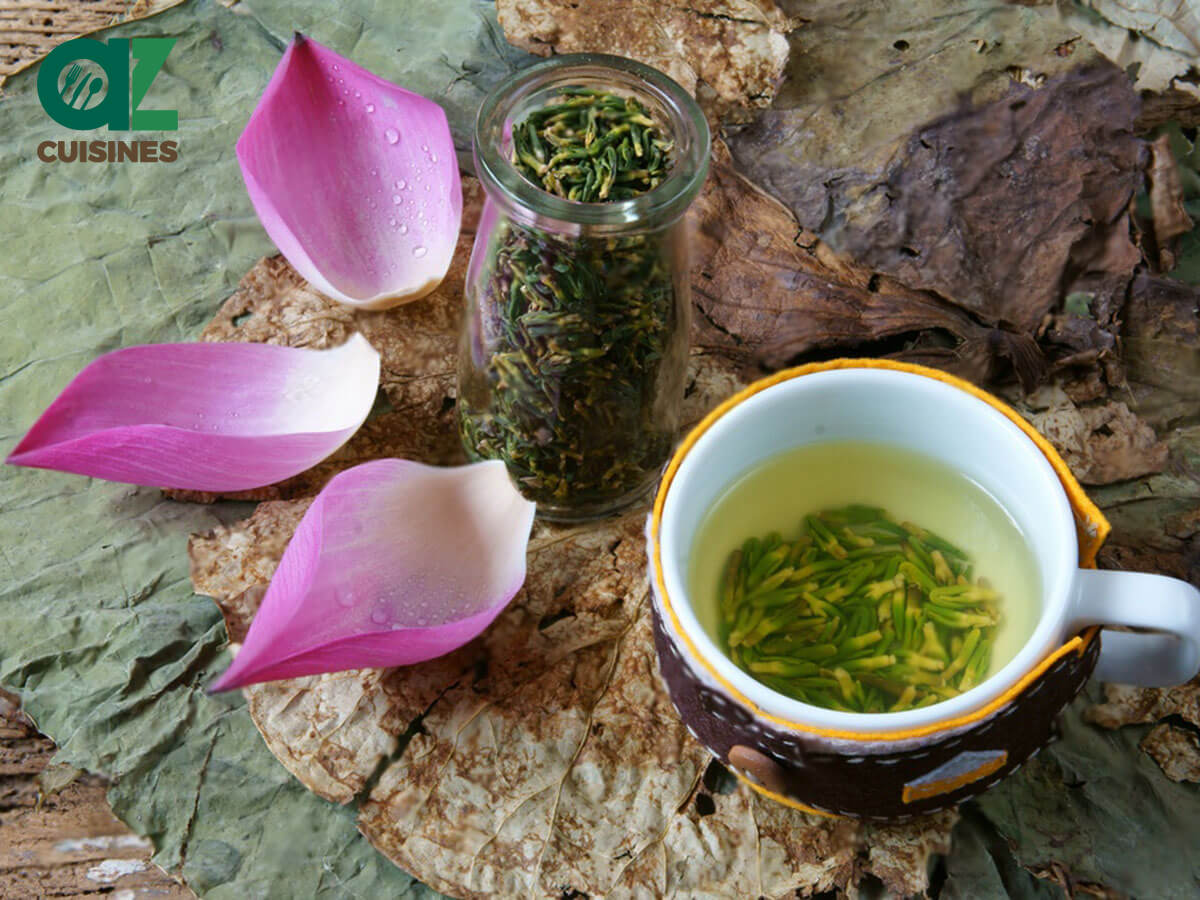
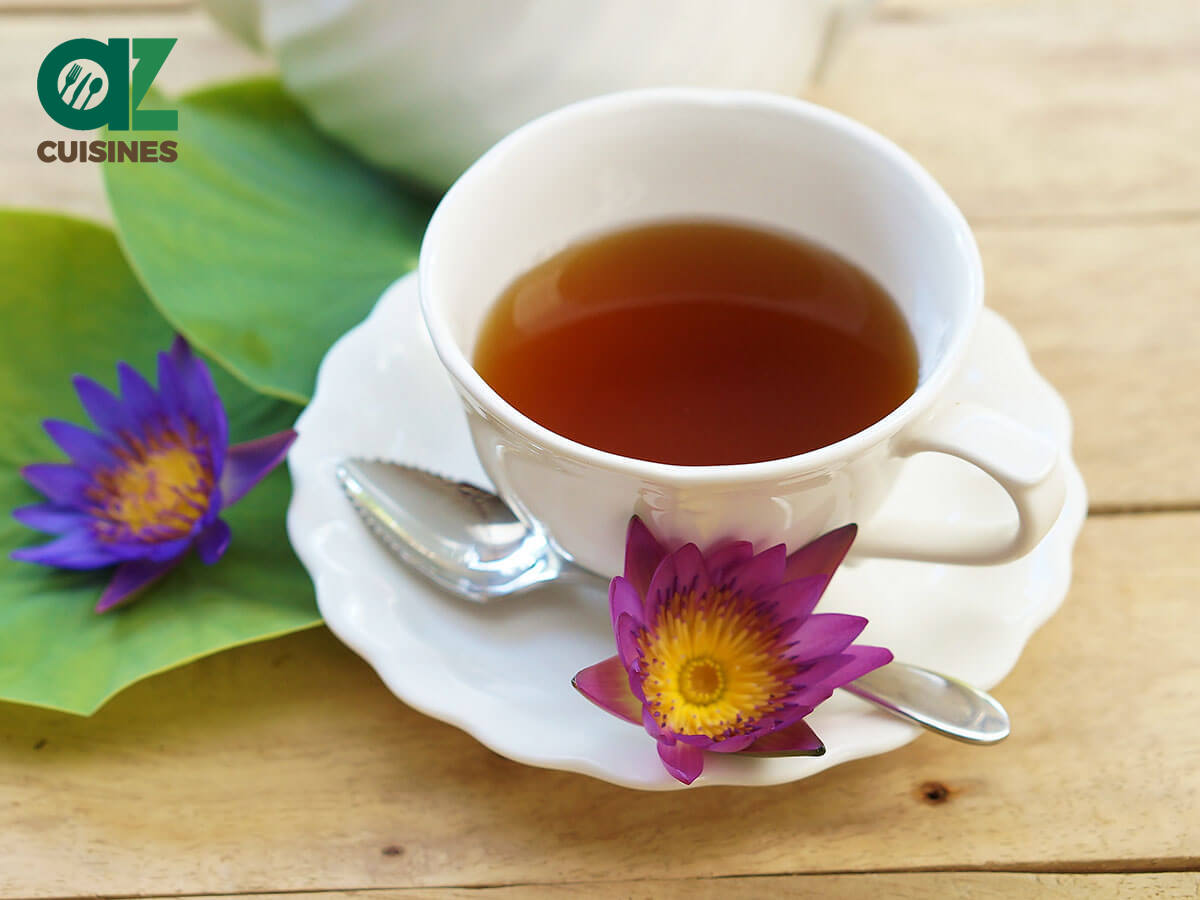
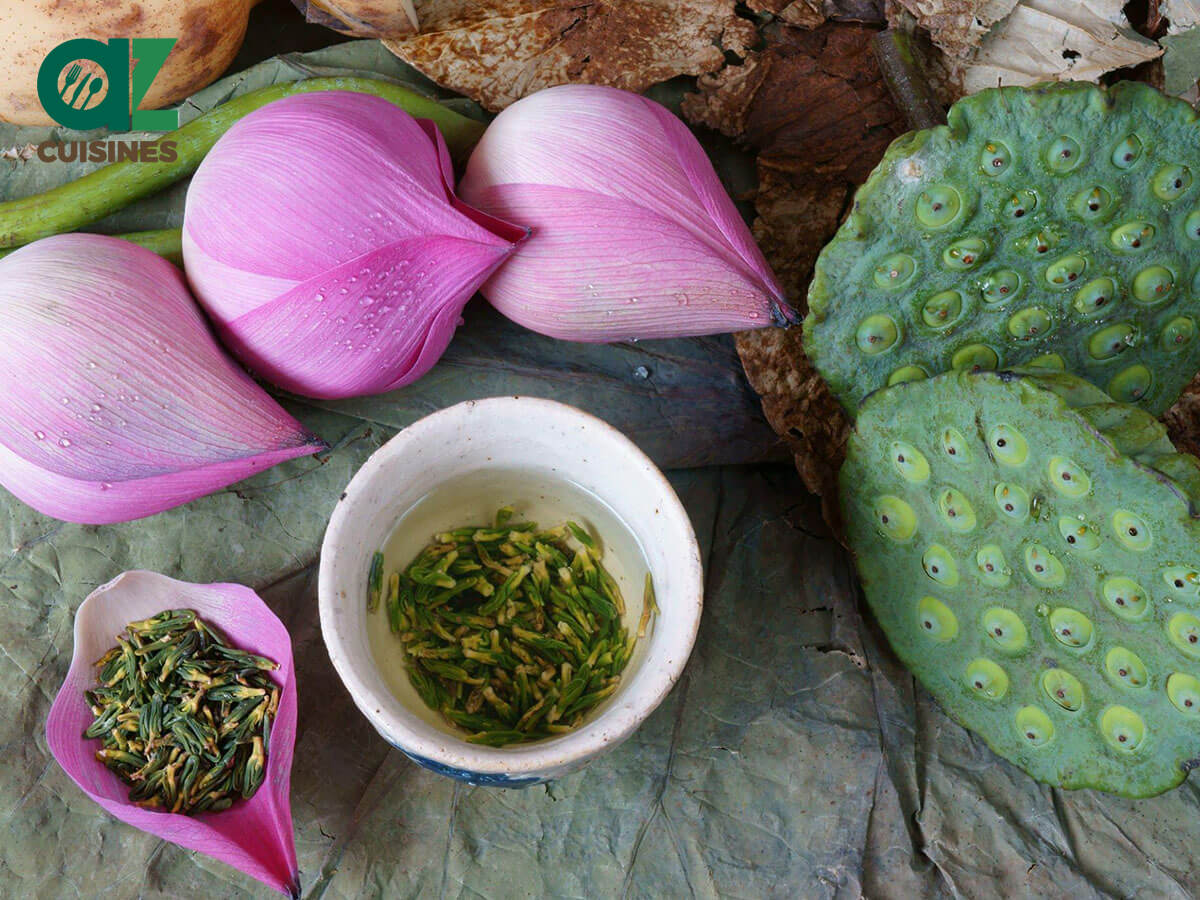
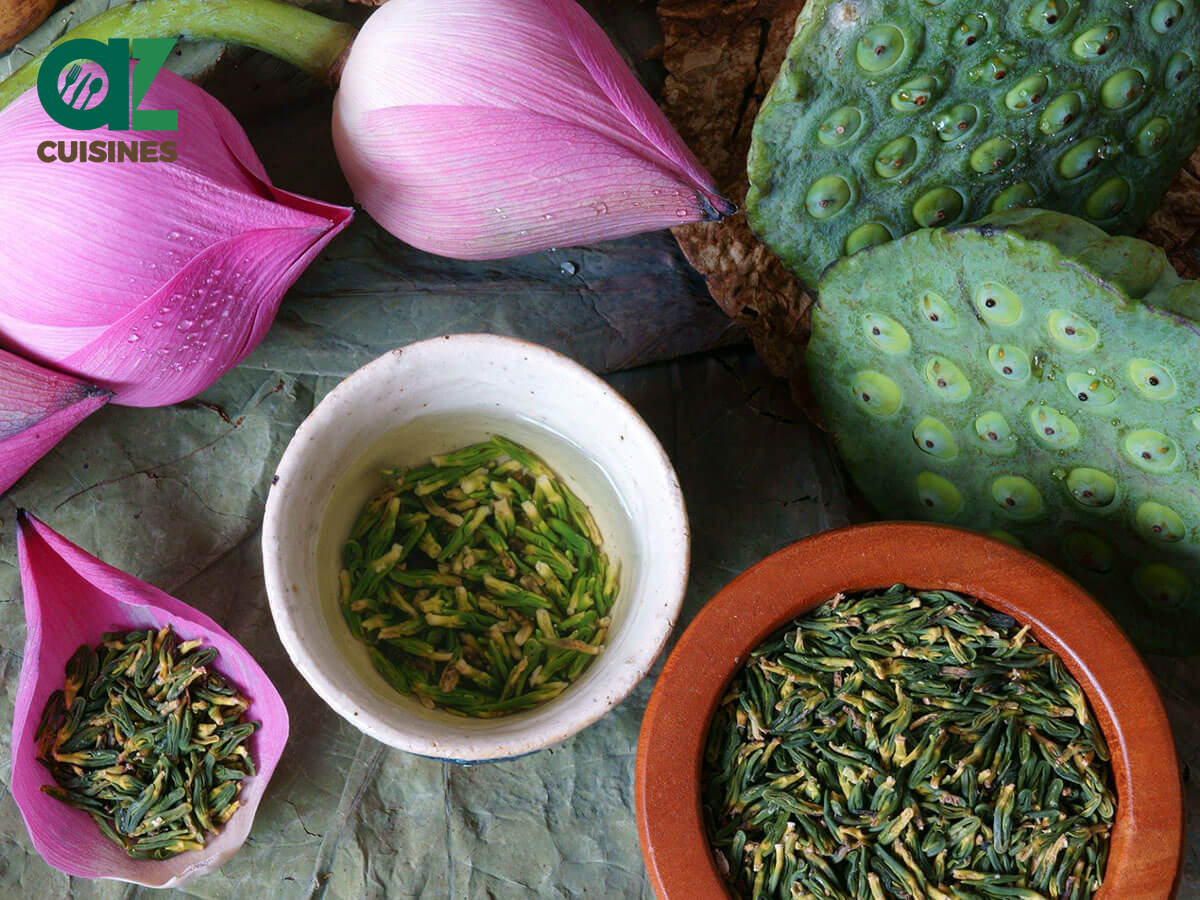
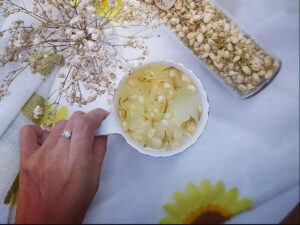
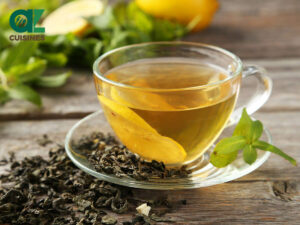
Adam Sam
Senior Food and Drink Editor
Expertise
Food Writer & Recipe Developer, Recipe Tester, Bartender, Cooking-video Maker, Editor In Chief
Education
Adam Sam, an experienced food writer and recipe developer, is passionate about blending diverse culinary traditions, national dishes, and innovative beverages, showcasing his proficiency in both traditional and modern recipe testing.
As the Editor-in-Chief, he elevates culinary content from street food to fine dining, focusing on Western cuisine and types of drinks at azcuisines.com, and is professional in creating engaging cooking videos that simplify complex dishes and ingredients.
His passion for food is evident in his writing, where he uniquely merges various cultures, traditions, and contemporary trends, skillfully combining classic recipes with modern cooking methods.